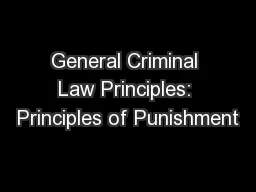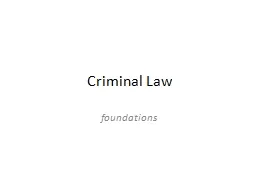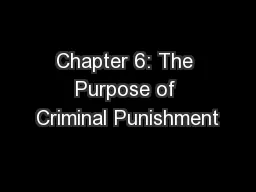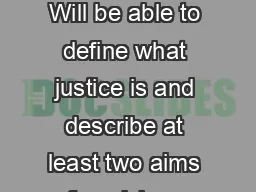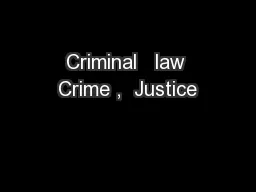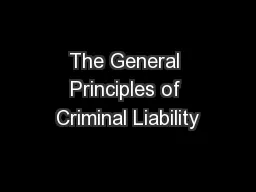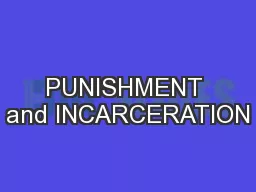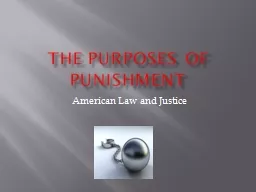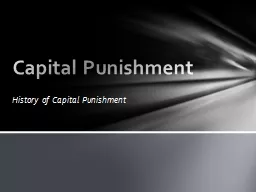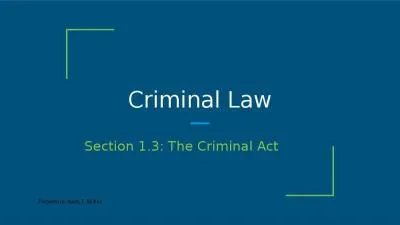PPT-General Criminal Law Principles: Principles of Punishment
Author : test | Published Date : 2015-09-27
Keyed to Ellen S Podgor Peter Henning Andrew E Taslitz and Alfredo Garcia Criminal Law Concepts and Practice Carolina Academic Press 2 nd 2009 Topics Discussed
Presentation Embed Code
Download Presentation
Download Presentation The PPT/PDF document "General Criminal Law Principles: Princip..." is the property of its rightful owner. Permission is granted to download and print the materials on this website for personal, non-commercial use only, and to display it on your personal computer provided you do not modify the materials and that you retain all copyright notices contained in the materials. By downloading content from our website, you accept the terms of this agreement.
General Criminal Law Principles: Principles of Punishment: Transcript
Download Rules Of Document
"General Criminal Law Principles: Principles of Punishment"The content belongs to its owner. You may download and print it for personal use, without modification, and keep all copyright notices. By downloading, you agree to these terms.
Related Documents

